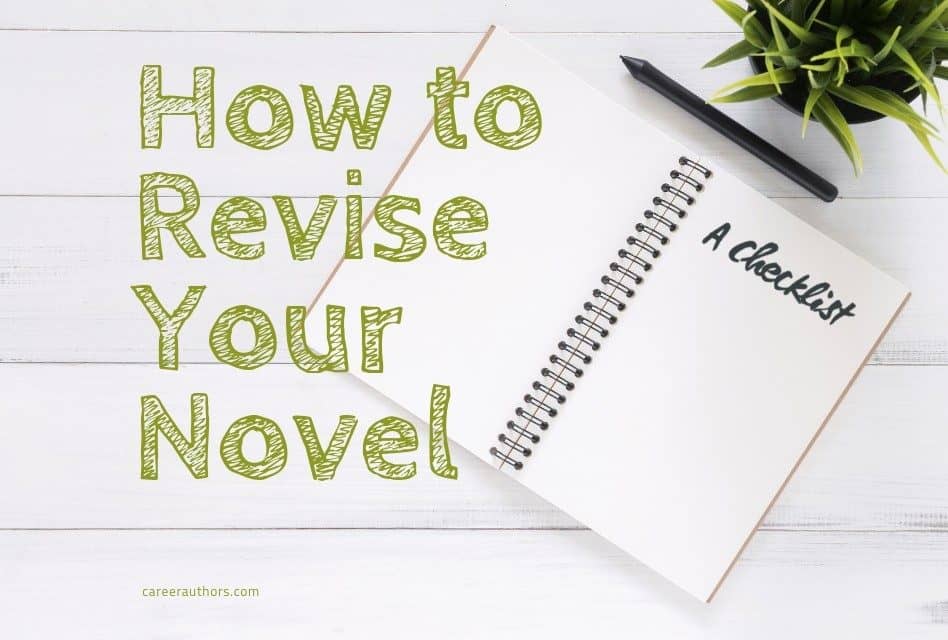You type THE END. You stand and applaud yourself. And you should! You’ve crafted the crucial first line, and the all-important end of page three, and the big hook at the end of chapter one. You nailed how to start a novel. Your book is still compelling after twenty pages, the middle of your novel is not bad, and the ending is kickass.
Yay, you!
But you are not finished. Now comes the good part. The difficult part! But the good part.
Revisions.
The good news and the bad news: it takes longer, much longer than you might think, to revise your novel and make your book wonderful.
How do you go through the whole darn thing and make it better? (If you’re me, how do you wrangle 120,000 words into 95,000?) I have kind of a system. Works for me.
First, stop
Put the book away for a week. (It should be two weeks, but who has two weeks?)
Read as someone else
Then start reading it. But here’s the key. Read it as if you didn’t write it. I do that by pretending I’m someone else. You know how when you hit “send” to deliver a manuscript to your editor or reader? And as soon as you do, you think—darn. I need to change this. That’s because in that moment, you are reading it through someone else’s eyes.
Try it, okay? Poof. You’re someone else. A tough reader, a smart reader, one who is seeing this thing for the very first time. Look at it as fun. As a challenge. Your goal is to help this poor writer be fabulous.
Ah HA. Now you’ll see the plot holes. The repetition. The stilted dialogue. The scenes (you have scenes, right?) without any action. The pages without conflict. The parts you skip. The weak verbs. Fix those.
Prune out crutch words
“Was.” “Just.” “Suddenly.” “That.” The excessive description. The repetition. The characters with no motivation. The coincidences. The wordiness. The repetition. (Oh, I said that.)
Prune out lazy words
Find your default words: how often did you write “of course”? Or “really”? Or “very”? We all have our favorites. And they all have to go. In one manuscript, I discovered I used “flickered” 23 times. Flickered! And “twisted” about as many times. (And I start too many sentences with “and.”)
Follow one trail
Choose a character and follow that person through your story. Are the motivations clear and understandable? The behavior consistent? Their language unique and identifiable? Their eyes the same color throughout?
Check for action
Are there scenes where nothing happens? Make sure every scene advances the story. And a good novel is all about action, right? So—be careful about the BOGSAT. (Bunch of guys, sitting around talking.)
Check for setting
Are there scenes without cinematic setting? If your book were a movie, would it be interesting? How can you amp up the mind pictures to make your book as visual as possible?
Check for the Hank mantra
My mantra? Hook. Stakes. Beautiful writing. Do you have that on every page?
Fun, huh? No, really, it is. When you revise your novel, you’re not finding mistakes or proof you’re a terrible writer. The opposite! Every time you discover an error or tighten a sentence or pick a stronger verb—you win. It’s a treasure hunt with you as the winner.
Revisions are when the magic happens.
You’ll see—wow, I have a theme! How did that happen? You’ll see clues you dropped—without even knowing it. You’ll see your clever parallel construction, and foreshadowing and character development and humor—stuff you didn’t even know you were writing. You’ll see how your brain has created a bigger story than you realized—and it’ll be a joy.
Jump into those revisions. There’s a surprise around every corner. And when you finally, finally type “The End” for real—it will be the beginning of something wonderful.
Do you have your own tricks for how to revise your novel? Share them with us on the Career Authors Facebook page. Now. Get writing.





